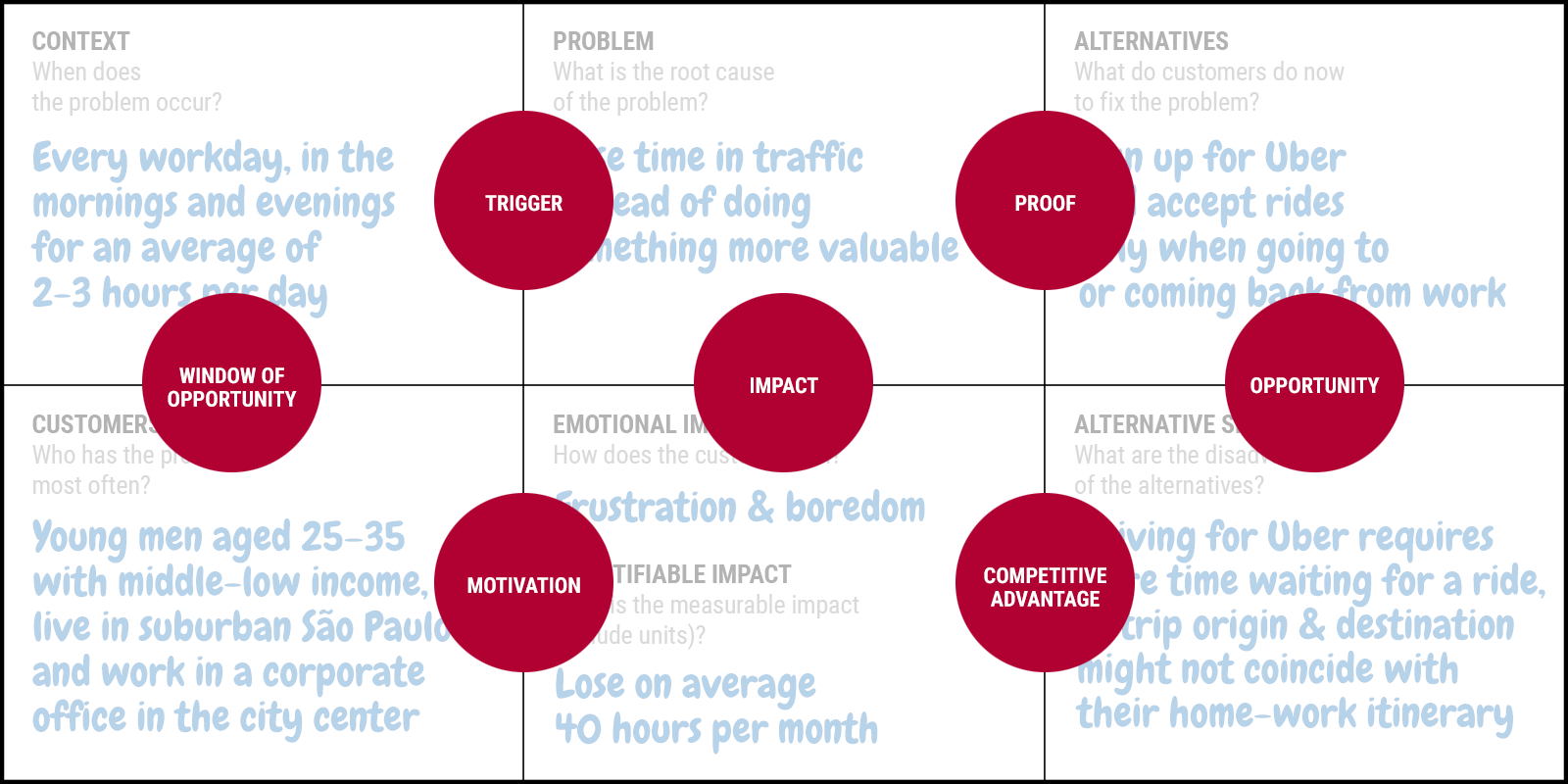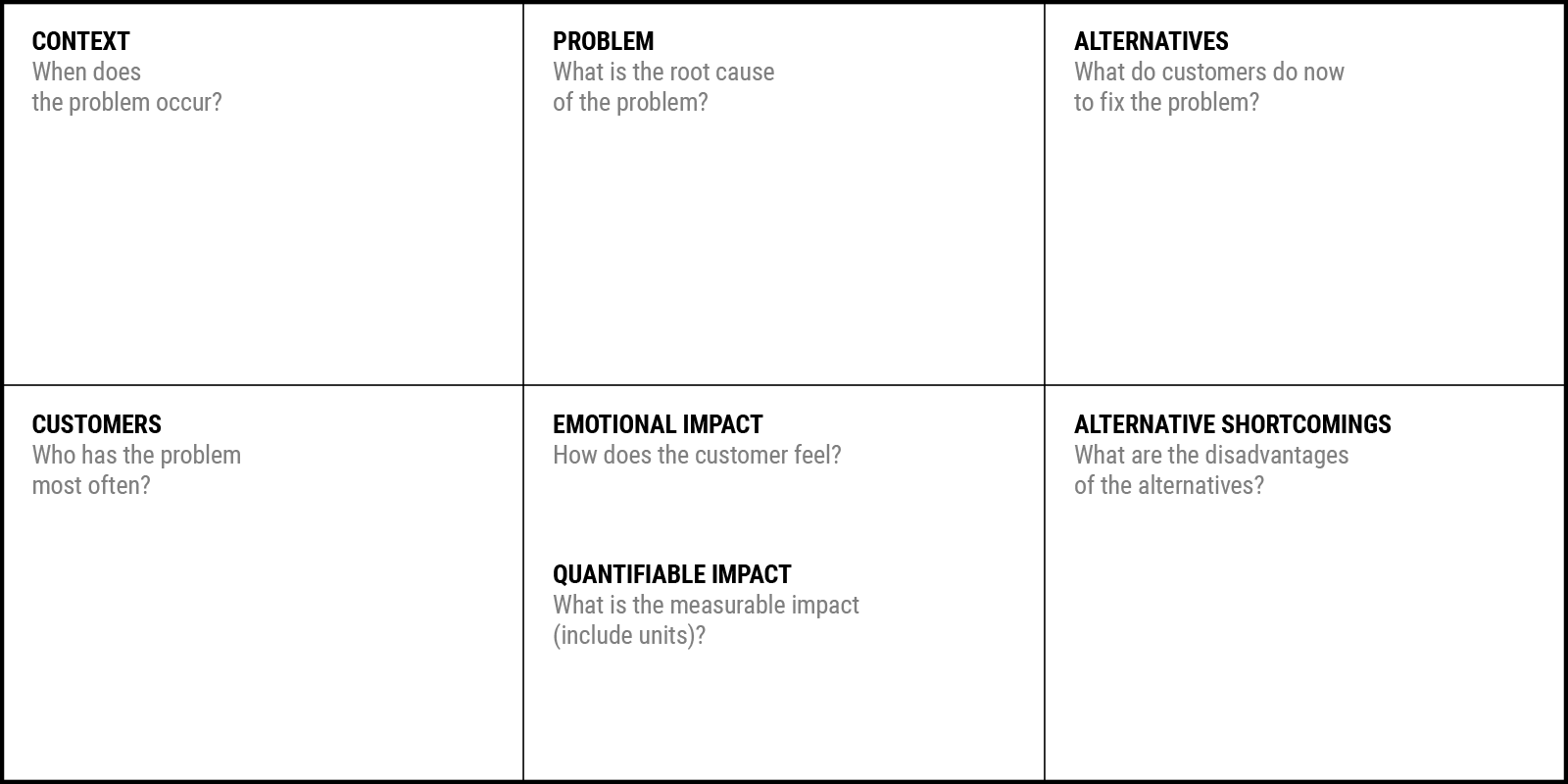The number one cause of startup failure is the lack of a real need in the market, according to a recent post-mortem on startups. This reminded me of probably the most important lesson I’ve learned from my mentor and friend Bill Aulet, Managing Director of the Martin Trust Center for MIT Entrepreneurship, a professor at the MIT Sloan School of Management, and author of the Disciplined Entrepreneurship books:
“The single necessary and sufficient condition for a startup to succeed is a paying customer”
—Bill Aulet, MIT
I’ve worked with Bill for the past few years, helping to spread the Disciplined Entrepreneurship approach, also teaching and coaching teams at the MIT Global Entrepreneurship Bootcamp, MIT Enterprise Forum, Singularity University, Future Innovators Summit, and many other acceleration programs around the world. During all these years, I saw a recurring pattern among startup founders, which is their obsession with the solution. They are so driven by their vision of a better technology, that they forget the most important things about startups, which I annoyingly remind to every founder I talk to (including myself):
A startup is a business, not a product.
Most of these founders are passionate engineers, designers or business people who want to build amazing things—apps, platforms, robots and more. They end up sacrificing their job, their lifestyle and sometimes their personal relationships for this passion and their vision. At the same time, this is also one of the main reasons they fail.
The hunt for unicorns driven by Silicon Valley investors requires entrepreneurs to be delusional, considering that there are only 174 unicorns (startups valued at over $1B) in the US. It is a mindset that encourages the ‘can’t-possibly-fail’ startup syndrome, an unfortunate wishful thinking on the part of many brilliant startup founders. Eventually, they build great technology but fail to identify the right problem and end up joining the startup graveyard.
As a startup founder, investor, accelerator manager, or mentor you want to do everything you can to mitigate these failure rates and the one way to achieve that is by obsessively focusing on the problem in the early stages, instead of the technology. The real talent in all entrepreneurship—not only in tech startups—is finding the right problem, not building the right solution. In other words, it is vital to have the skills of Sherlock Holmes, not only those of Doc Brown. Once the problem is correctly identified and understood, building the right solution that will lead to a good business is much easier.
The problem statement canvas
Let me walk you through the process of defining problems using a problem pitched by one of the startups I’ve recently mentored:
“People have a huge problem with traffic in São Paulo. We’re going to build the leading ridesharing app for them.”
It was a good start, but the “problem” with this problem statement is that half of it talks about the solution. I could not really understand who those people were, how huge the problem was, and could not be convinced by yet another “app” solution for a systemic problem. Truly identifying a problem means looking deeper at the symptoms, the customer, the impact, the alternatives, the opportunity, and the relationships between them, while avoiding the “solution bias” (often known as “The problem is that the customer does not use my solution”):

After coaching and mentoring hundreds of startups around the world, learning from some of the best mentors and successful entrepreneurs, I’ve created a simple tool for defining problems in the right way: the Problem Statement Canvas.
While far from being perfect, this way of stating the problem helps everyone better understand the complexity of the problem, completely leaving out the solution. The generic format of the problem statement can be summarized as follows:
When context occurs,
customer type who has characteristic and characteristic,
have problem.
Because of this, they feel emotion, then experience quantifiable impact.
Currently, they use alternative solutions
despite disadvantages.
For those of you who are more visual, the canvas can also be used in a visual format.
Download the Problem Statement Canvas here.
Regardless of whether you’re the founder, or you’re working with a startup as an investor or mentor, this is something you want to go over together. Having a common understanding of the problem at each level in the company is critical. Let’s go into each area of the canvas.
Customer type
One of the early stage mistakes is not focusing on the right customer, because of the mirage of keeping multiple opportunities open. “Closing a door on an option is experienced as a loss, and people are willing to pay a price to avoid the emotion of loss,” concluded an experiment ran at MIT by Dan Ariely, a renowned behavioral economist.
You want to focus, and find the 10% of the people for whom the problem is a real pain, not the 90% for whom it’s just a nuisance. Who are they? Where do they live? What is their income? What does their regular day look like? As a founder, you want to be able to walk in their shoes, do their job, live their life, talk to them over breakfast, lunch or dinner, observe them and even ask to shadow them. You want to understand the customer through a demographic and psychographic lens, using at least 2-3 relevant criteria.
To get back to our initial example, instead of:
“People in São Paulo”
we successively refined the customer profile to:
“Young men aged 25–35, with middle-low income, who live in suburban São Paulo and work in a corporate office in the city center.”
Focusing on a single customer segment, which could be your beachhead market, has many benefits:
- You avoid the Chinese glove market fallacy.
- You get an in-depth understanding of how the problem affects people’s lives.
- It’s easier to find those people and discover patterns of behavior, which makes it easier to market the product to them.
- From a business point of view, it’s better to build the best solution for a specific group of customers, than to build yet another average solution for a larger market.
Remember The Social Network movie? Today, everyone imagines that Facebook achieved total world domination by, well, just thinking like a unicorn. But that’s not true. Facebook started as a network for Harvard students, solving student-specific problems. Then, it scaled to other Ivy League colleges. Afterward, it went to other colleges in the US (remember when you could not get a Facebook account unless you had a .edu email address?). Only later on did it open up to everyone, but this strategy helped them focus on what mattered to their customers. They did not start by taking on MySpace or Friendster.
Context
When does the problem occur? Most of the problems are not permanent, and understanding what triggers them will help you further understand the root cause of the problem. More than this, you will understand what is the window of opportunity—when the problem becomes acute and most painful for the customer, and also when he is also most likely to take action (which in the future could be acquiring your solution).
For our startup, the context then became
“Every workday, in the mornings and evenings, for an average of 2-3 hours per day.”
Root problem
Working with the team, we initially came to this refined problem:
“Are stuck in traffic.”
However, this is not the root problem, but rather a complex of symptoms. Identifying the root cause, not the symptoms, is essential to building the right solution. Identifying the root is often difficult, but fortunately, a technique called root cause analysis will help us get to the real issue.
Focusing on events/consequences that exist and asking “why is this a problem?” several times will help you get to the real root cause that you have to address. For example, you might have a problem: your car does not start. But that’s not really a problem, it’s a symptom. You can usually find the first cause of this problem by asking “Why?” The answer is “The battery is dead.” Many entrepreneurs will stop here, then embark on a journey of building better car batteries.
By applying the process we get different answers:
- Second why: The alternator is not functioning.
- Third why: The alternator belt has broken.
- Fourth why: The alternator belt was well beyond its useful service life and not replaced.
- Fifth why: The vehicle was not maintained according to the recommended service schedule. (the root cause).
Do you still think that building better car batteries is a viable solution in this case? Or rather coming up with a different solution that solves the servicing schedule?
We applied the above thought process for our team:
- First why: Because it takes a long time to get to work
- Second why: Because they are wasting precious time
- Third why: Because they might use that time to do something more valuable
- Fourth why: Because they could earn more money in that time
So the final problem could be stated as:
“Could do something more valuable in the time they lose in traffic.”
Emotional impact
It’s not enough to understand the problem as a phenomenon or as an event; you also have to consider its emotional impact, because this helps you walk in your customer shoes and understand their behavior. Each problem causes an emotional response (joy, sadness, anger, fear, trust, distrust, surprise, anticipation) and its magnitude is directly linked to the person’s interest in using your solution. If someone is merely annoyed by something, they are much less likely to try a solution than if they were angry when the problem occurred.
Fully understanding these emotions is essential in identifying windows of opportunity and triggers that will make your customers use your solution. “When customers are in homeostasis their habits are set and you’re not going to move them,” says Bill Aulet in the Disciplined Entrepreneurship Workbook, who has analyzed recent insights from behavioral economics, in order to identify when a startup has a greatly increased chance of influencing customer decisions and to understand what triggers the use (and then the purchase) of a new solution.
In our above case, the emotions are frustration and boredom.
Quantifiable impact
At a certain stage, a startup has to determine its pricing strategy. For this, it needs to quantify its value proposition which is difficult without understanding and quantifying the impact in the current state.
The impact should always be expressed in a currency. These currencies can be more legible (money, goods, time) or less legible (energy, health, relationships). Ideally, you would want to express the impact in a currency that is as legible as possible, because the impact is more visible in loss of cash, goods or time than the loss of relationships or health. This will also help to communicate it more convincingly to the customer.

In our case, we identified the impact as being:
“Lose on average 40 hours per month.”
Alternative solutions
For many disciplined founders, the work stops with the previous step. But before jumping to a solution, shouldn’t you look at what your potential customers are doing to treat their pain or some of its symptoms? If what you discovered to be a problem is really a problem, your customers are likely to be using different tools and actions, or combinations of them, to ease or manage the pain.
Sometimes they might be improvising ingenious things to fulfill their needs, something that MIT professor Eric von Hippel describes in his Free Innovation book. Looking at these alternative solutions and breaking down each of them into pros and cons, will be a great help in identifying opportunities for a painkiller solution.
Flipboard, for example, looked at the success of read-it-later tools like Instapaper or Pocket which allowed users to read interesting articles without the clutter of their web pages. They took the time to understand how users were reading traditional paper-printed magazines, before creating a great reading experience with their iPad apps. Eight years later, it’s still one of the top News apps in both the App Store and Google Play.
Slack did not reinvent the wheel, they just looked at what people were already doing by using email and group messaging tools like ICQ or IRC chats to improve their productivity, and made a rather simple tool that better enabled those behaviors in a work context.
Our São Paulo startup identified a few behaviors of which one later became a critical element of formulating their solution:
“They sign up for Uber but only accept rides when they go to work or come back.”
Alternative solution disadvantages
Competition is good, it proves the problem is real. But what if you can’t beat the competition (which is the case in many mature markets)? That’s the reason why finding the disadvantages or shortcomings of alternative solutions will help you understand where the core of your solution (your unfair advantage) resides.
For our team it was easy:
“Driving for Uber requires you to spend more time waiting for a ride in the area, as the origin and destination of the trip might not coincide with your home-work itinerary.”
Taking a step back
At this stage, we can look at the initial statement, which rather sees the systemic size of a problem (very hard to solve):
“People have a huge problem with traffic in São Paulo. We’re going to build the leading ridesharing app for them.”
Then compare it with the one we came up with after going through this process:
Every workday, in the mornings and evenings (for an average of 2-3 hours per day),
young men aged 25–35, with middle-low income, who live in suburban São Paulo and work in a corporate office in the city center
lose time in traffic instead of doing something more valuable with it.
This makes them feel frustrated or bored,
as they lose on average 40 hours per month.Currently, they might sign up for Uber and accept rides when they go to work or come back.
However, driving for Uber requires them to spend more time waiting for a ride in the area, as the origin and destination of the trip might not coincide with their home-work itinerary.
Or in the visual problem statement canvas:

What’s even more interesting is that at the intersection of the above areas we will discover some key elements for turning the problem into a viable solution and business, as you can see in the canvas below:

This process led the São Paulo team to come up with a rather different solution than the initial one they imagined, one which would have been hard to identify without looking at all the above. The solution was a ride-sharing platform that allowed their customers to generate revenue while driving other people in their neighborhood to work. Unlike Uber, their solution was subscription-based and a very ingenious way of generating not only revenue but also quick growth.
Maybe, in a few years, this will even solve the systemic traffic problem in São Paulo. But until then, their startup has the chance of becoming a profitable business that generates true value for their customer.
The author
Marius Ursache
A serial entrepreneur, designer, and former doctor, Marius is the CEO and founder of Metabeta, a data-driven portfolio management tool for tech investors and accelerators.

The Disciplined Entrepreneurship Toolbox
Stay ahead by using the 24 steps together with your team, mentors, and investors.
The books
This methodology with 24 steps and 15 tactics was created at MIT to help you translate your technology or idea into innovative new products. The books were designed for first-time and repeat entrepreneurs so that they can build great ventures.

How relevant was this article to you?
Click on a star to rate it!
Average rating 4.8 / 5. Vote count: 132
No votes so far! Be the first to rate this post.
We are sorry that this article was not useful for you!
Let us improve this post!
Tell us how we can improve this post?


Good stuff!
I like the inclusion of emotions in the framework. If it helps, in this video (https://youtu.be/WCci-OF8lrQ) I shared some thoughts and non-traditional practical steps about how to define a market segment around problems as a group of people who have in common a role inside a context and they are facing the same problem that triggers a specific emotion.
👨🚒 [ Role ] + 🚨 [ Context ] + 😰 [ Emotion ] + 🔥 [ Root cause ]
Hope this helps 🙂
Federico
Must read for defining problem statement. Inclusion of emotional component makes the canvas to define the problem. The structure of canvas makes the founders to deep-dive to understand the problem and look at the solution from customer view.
Thanks for sharing
The proposed Canvas addresses the central problem the startup is aiming at. However, the proposed solution may bring emergent problems, such as: reliability, responsibility in case of accidents, etc. How to account for the emergent problems in this model?